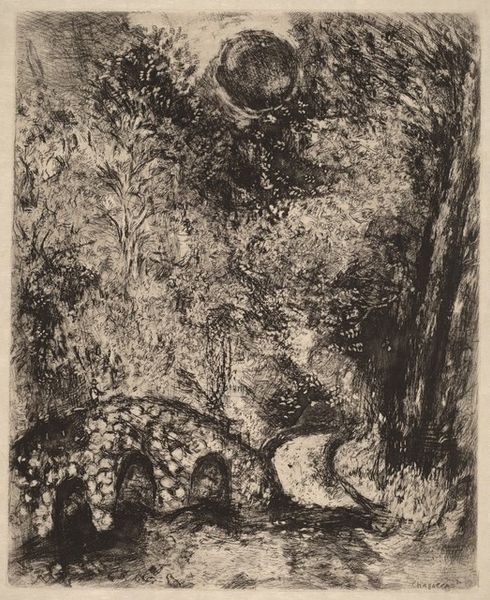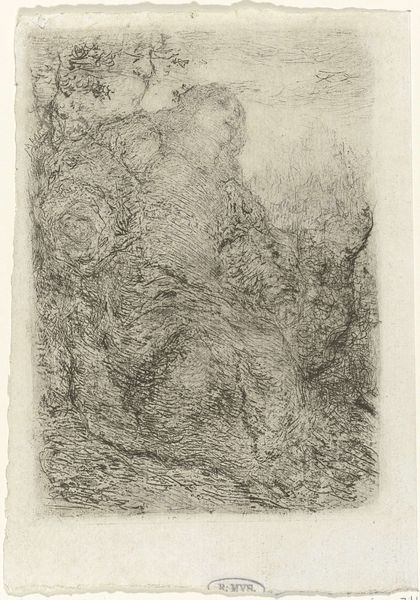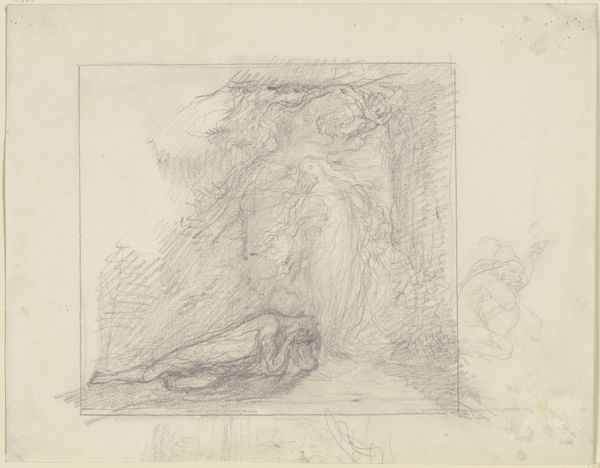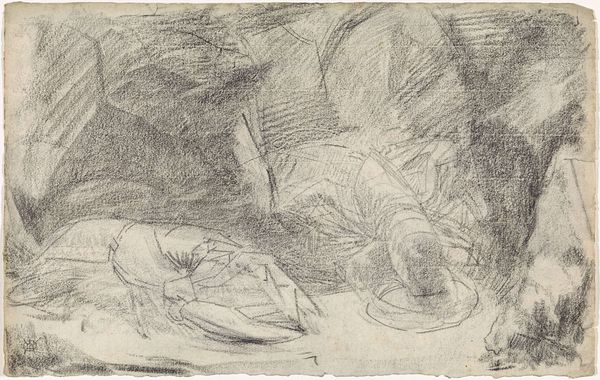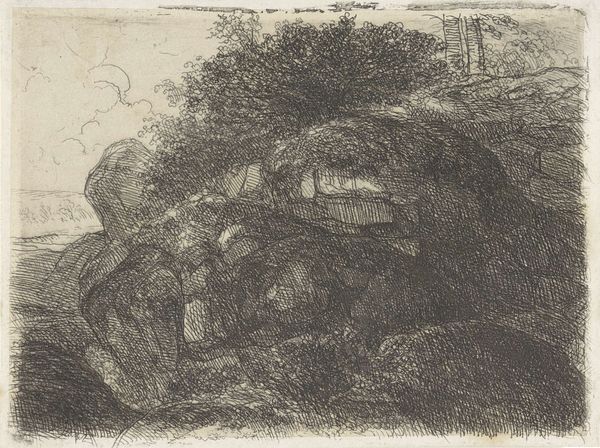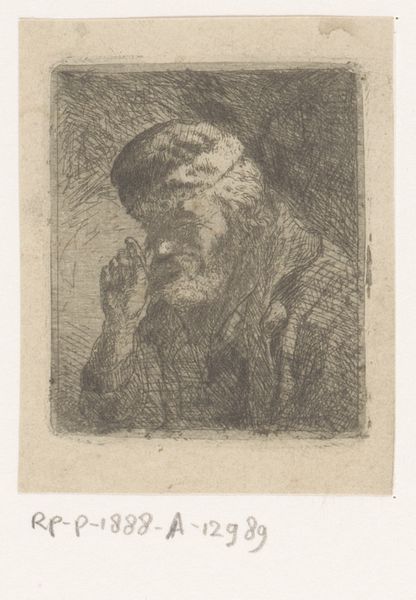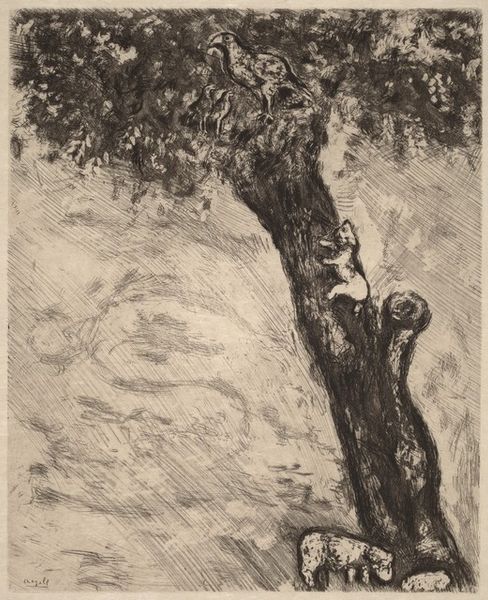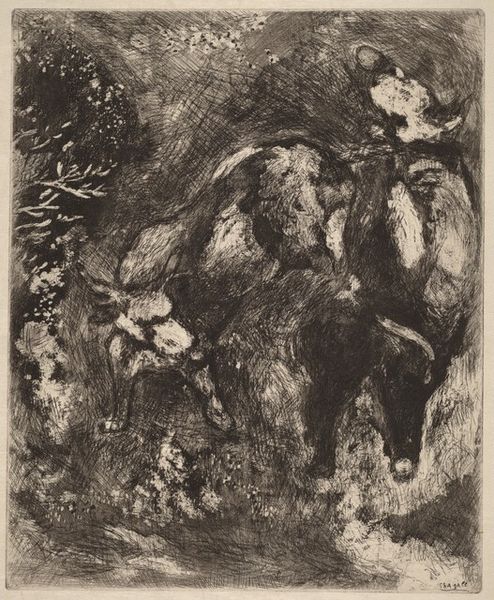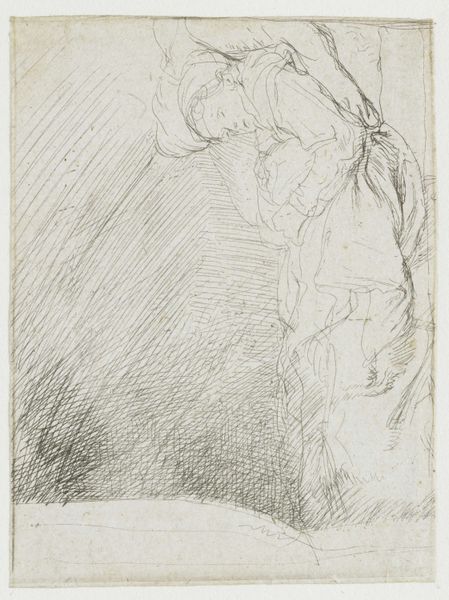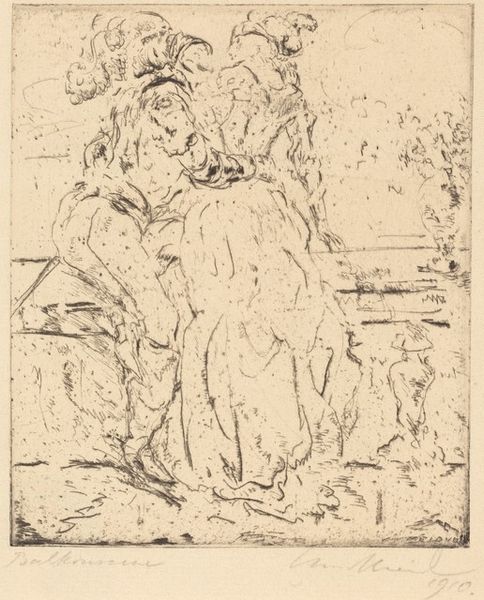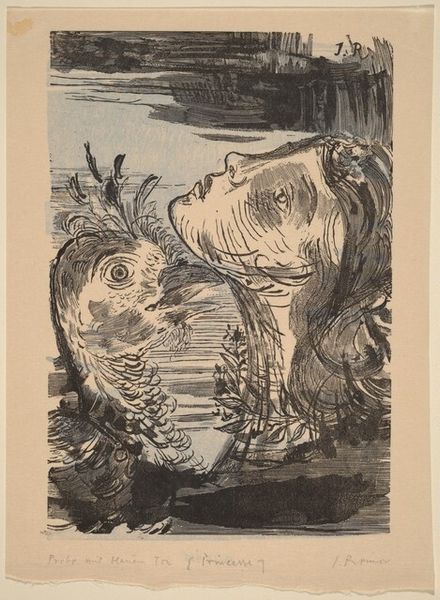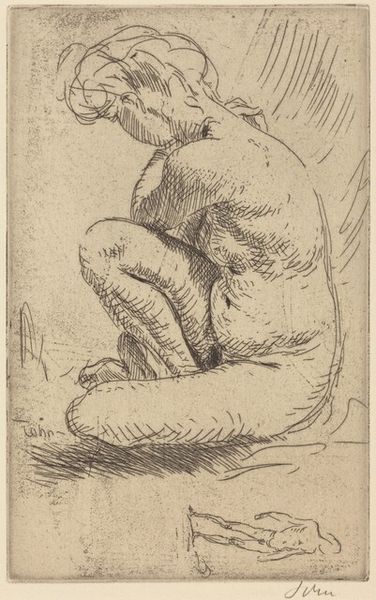
drawing, print, etching, paper, ink
#
portrait
#
drawing
# print
#
etching
#
landscape
#
charcoal drawing
#
figuration
#
paper
#
ink
#
pencil drawing
#
line
#
symbolism
Dimensions: height 159 mm, width 117 mm
Copyright: Rijks Museum: Open Domain
Curator: Before us, we have "Vrouw onder een boom," or "Woman under a Tree," an etching by Matthijs Maris, created between 1887 and 1888. It's currently part of the Rijksmuseum collection. What are your first thoughts? Editor: It feels… wispy, almost as if the woman and the tree are both dissolving into mist. There’s a fragility that’s quite striking, a kind of haunting melancholia. The lines are so delicate, aren't they? Curator: Absolutely. Maris employed etching techniques to create that sense of delicate impermanence you've observed. The medium, combining ink and paper, plays a significant role in this effect, speaking to printmaking traditions as a conduit to distribution and reproducibility. Editor: It's like he’s trying to capture a memory fading at the edges. I wonder what her story is. Is she seeking refuge, or lost in reverie? It whispers rather than shouts its meaning. The line work has a tactile, almost sculptural quality, hasn't it? Curator: I agree; Maris' use of line and shadow are what lend the work its almost Symbolist sensibility. Considering his involvement within artistic circles, these intentional aesthetics engage with a focus on internal states and ethereal qualities, rather than overt realistic representation. Editor: Perhaps she is us all, seeking a moment of peace from the constant hum of the world. I like how it resists a quick reading; there's a slowness demanded by the image. That's rather refreshing. What’s especially lovely is the merging of figure and landscape—there is little separation between this woman and the embracing environment of the tree. Curator: A convergence of form and concept is so essential for work made during the late nineteenth century, as an emphasis on modern print production allowed for nuanced interactions between perception, artistic interpretation and an expansion in viewership. It really captures that sense of ephemeral beauty so crucial to much of the period’s artistic explorations. Editor: Well, now I am absolutely captured by its spell! The intimacy of it, its ethereal quality... It invites endless imaginative wanders, doesn’t it? Curator: Precisely, it provokes a quiet thoughtfulness, one which mirrors the artistic and social currents running through that particular moment in history.
Comments
No comments
Be the first to comment and join the conversation on the ultimate creative platform.
